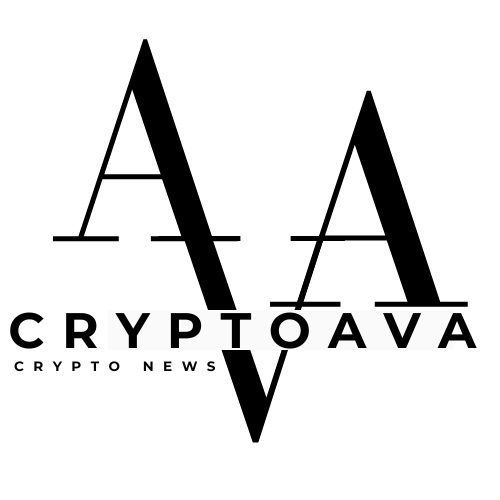For practically a decade, XRP has been the underdog of the digital-asset world, overshadowed by Bitcoin’s narrative dominance, Ethereum’s developer gravity, and Solana’s pace headlines.
But whereas many of the market debated ETFs and alternate listings, XRP’s core community, the XRP Ledger (XRPL), stored quietly evolving within the background.
It’s now re-emerging as an infrastructure layer blockchain community that powers real-world funds, stablecoins, and the early wave of tokenized property.
From litigation to licensing
Ripple’s lengthy regulatory standoff resulted in August 2025, closing a chapter that outlined a lot of XRP’s final decade.
A US courtroom confirmed that XRP’s retail gross sales will not be securities, whereas Ripple paid a $125 million civil penalty to settle institutional violations. With each side dropping appeals, the choice gave Ripple the authorized certainty it lacked for thus a few years.
That readability has allowed Ripple to safe over 40 US money-transmitter licenses, together with New York, Texas, and California, granting it a nationwide footprint for crypto-fiat settlement.
The impact has been rapid as XRP may lastly combine with regulated cost companions, which is one thing few US-linked blockchains can do.
Behind these regulatory wins, the XRP Ledger itself started to indicate new life. Transactions tied to cost and treasury exercise have risen sharply, reflecting renewed curiosity from monetary establishments that after stored their distance.
In areas like Africa and Southeast Asia, the place stablecoins have change into the default rail for remittances, XRPL is now positioning itself as a compliance-ready various to Tron and different permissionless networks.
Institutional adoption
One clear instance of this real-world comeback is the extent of institutional adoption the blockchain enjoys globally.
In September, SBI Group and Tobu Prime Excursions reportedly unveiled plans to concern pay as you go journey tokens on the XRPL in Japan.
Talking on the significance of the transfer, Ripple’s Tatsuya Kohrogi famous:
“That is vital because the market in Japan for pay as you go cost devices is $200 billion yearly. The tokens will flow into in regional financial zones, from vacationer hotspots to sports activities communities, driving native spending and digital innovation.”
Based on the Nikkei report, every token features like a digital pay as you go card, redeemable at native shops and tourism hubs. Customers can prime up with yen, spend immediately, and money out with out intermediaries.
For a market the place pay as you go devices already deal with about $200 billion a yr, shifting these flows to XRPL represents one of many largest blockchain integrations tried in a serious financial system.
Primarily, the aim isn’t crypto hypothesis; it’s infrastructure modernization. By constructing on XRPL’s low-fee, high-throughput ledger, Japan is testing how digital tokens can drive cashless tourism and native commerce whereas absolutely complying with monetary laws.
One other mission, from Webus Worldwide, pushes XRP’s utility even additional.
The Singapore-based firm is growing a tokenized travel-rewards alternate utilizing XRPL’s stablecoin framework to hyperlink airline miles, lodge factors, and retail loyalty credit. This market is price practically $100 billion worldwide.
Webus plans to show these remoted reward techniques into transferable digital property. Tokenizing balances lets shoppers swap or redeem them throughout manufacturers in actual time, unlocking liquidity that loyalty packages have traditionally trapped.
This additionally presents a refined instance of XRP’s renewed position in connecting beforehand closed monetary techniques with out breaking compliance.
Stablecoin and RWA frontier
One other clear proof of XRPL’s development is its rising footprint throughout the stablecoin and real-world asset (RWA) tokenization markets.
Ripple, via its RLUSD stablecoin, is competing straight within the over $300 billion stablecoin market.
Whereas the RLUSD’s $898 million market capitalization pales compared to the billions of Tether’s USDT and Circle’s USDC, the digital asset has gained vital institutional utilization.
For context, crypto alternate Bullish lately disclosed that it used the stablecoin asset and others to settle its $1.15 billion IPO proceeds.
This may be linked to RLUSD’s distinctive design, which prioritizes strict KYC and AML requirements. Furthermore, Ripple’s latest acquisition of corporations like Hidden Street and Rail offers RLUSD a bonus over others, guaranteeing its reserves and distribution keep inside licensed channels.
The compliance angle additionally differentiates XRPL from rival blockchain networks like Tron and Solana by embedding regulation into the community.
Earlier this month, XRPL launched the Multi-Function Token (MPT) Normal, which permits digital asset issuers to restrict transfers to verified holders via decentralized identifiers and verifiable credentials.
Meaning each compliant stablecoin or tokenized asset can implement regulatory controls straight on the protocol degree, and no third-party filter is required.
Martin Hiesboeck, the Head of Analysis at Uphold, stated:
“The MPT customary strategically positions the XRPL because the main safe and compliant institutional blockchain for the way forward for tokenized finance.”
This structure is now attracting a mixture of stablecoin issuers and monetary establishments. Stablecoins like Circle’s USDC, EURØP, USDB, and XSGD all added XRPL assist in 2025, signaling confidence within the community’s scalability and compliance-ready instruments.
In the meantime, that imaginative and prescient extends properly past stablecoins.
Ripple’s roadmap positions XRPL as a base layer for RWA tokenization, which entails every little thing from US Treasuries to industrial credit score merchandise. This has already seen vital adoption from international authorities like Dubai and main monetary establishments like Guggenheim and BlackRock.
Consequently, the blockchain community now ranks among the many prime 10 chains for RWA tokenization, dealing with greater than $360 million in property.

Contemplating this degree of adoption, crypto researcher Rob Cunningham concluded:
“In a conservative “base case” [XRPL is] a critical hall participant and RWA registry/settlement layer; On the upside, it’s a GO-TO ledger for Stablecoin-settled cross-border Treasury and high-grade RWA settlement with MULT-TRILLION ANNUAL THROUGHPUT by 2030.”



